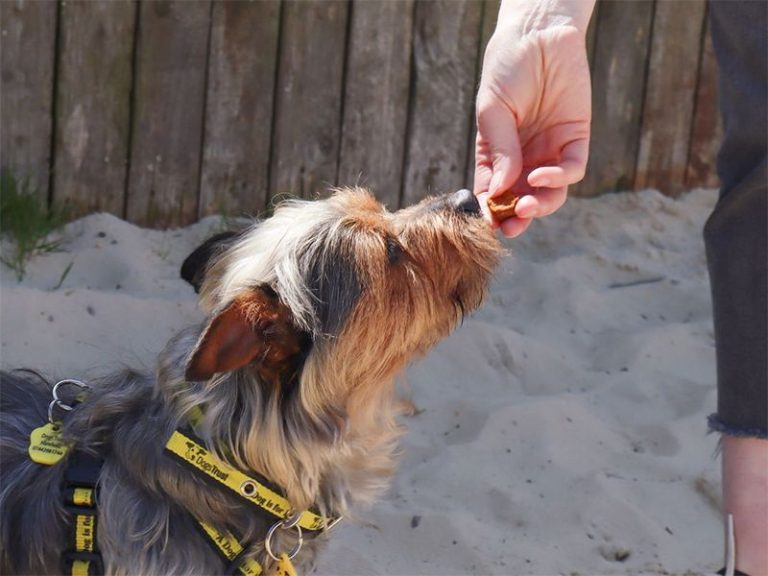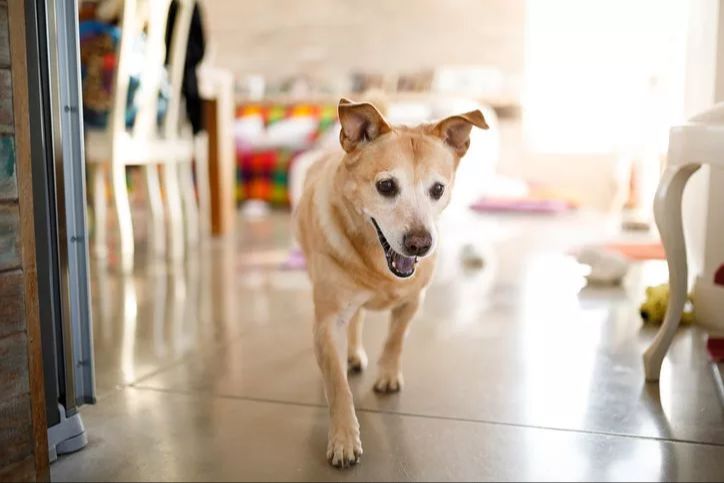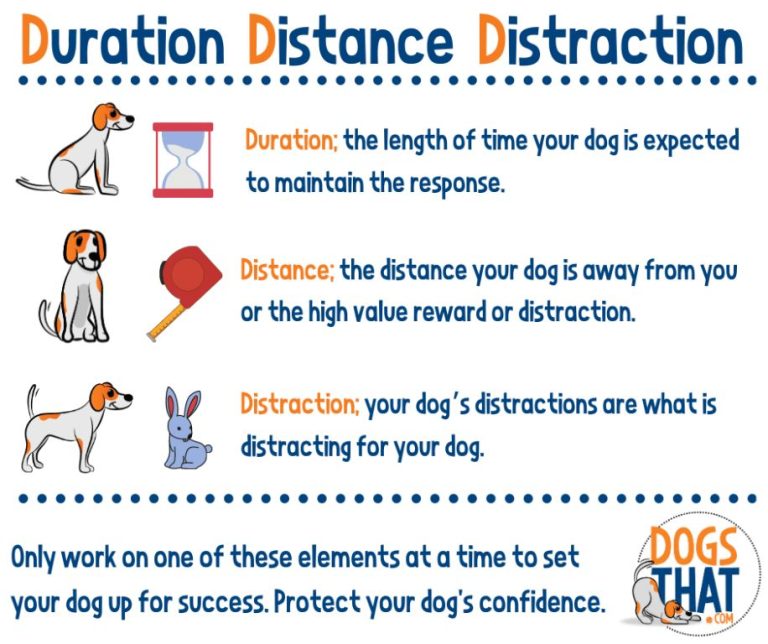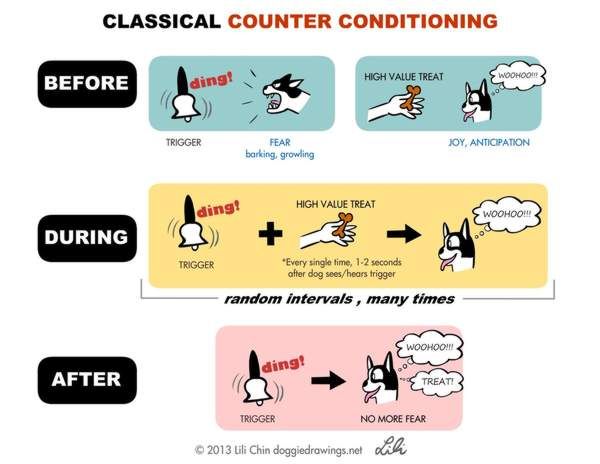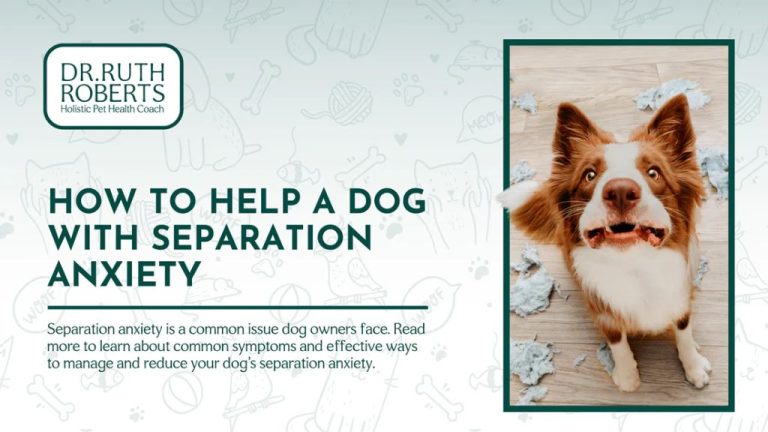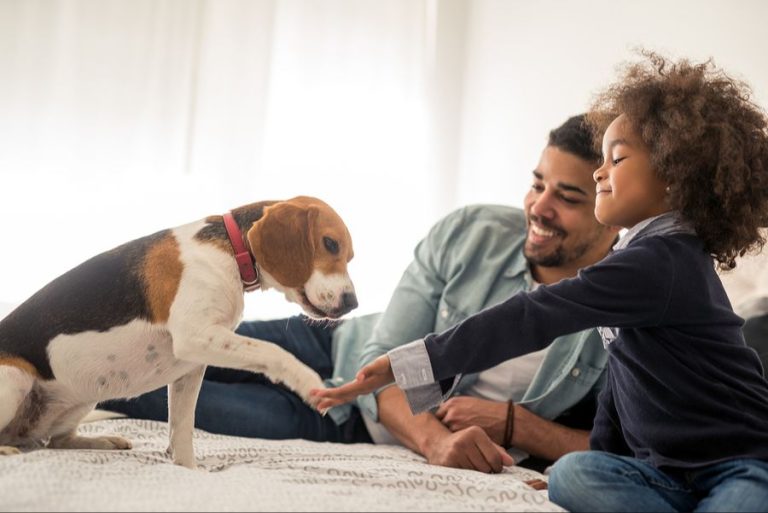Teaching Your Dog To Stay Calm During Grooming Sessions: Desensitization Tips
Grooming is essential for dogs’ health and hygiene. Regular grooming helps keep a dog’s coat and skin clean and free of mats, tangles, and parasites. It also allows examination of the skin for any problems like rashes, growths, or injuries. However, many dogs dislike or even fear the grooming process. Noises from clippers and dryers, restraint needed for some procedures, and handling of sensitive areas can be frightening or uncomfortable for dogs. This apprehension may lead to stress responses like shaking, panting, attempts to escape, or even aggression. The aim of this article is to provide techniques to calmly desensitize dogs to grooming activities. With time and patience, most dogs can learn to relax and tolerate routine grooming tasks.
Understand the Cause of Grooming Anxiety
Many dogs experience anxiety during grooming sessions due to a variety of factors. Some common reasons dogs may fear grooming include:
Unfamiliar Environment – The sights, sounds and smells of a grooming salon can be overwhelming for some dogs. They are taken out of their comfort zone which causes anxiety.
Restraint – Dogs are often placed on grooming tables and tethered during the grooming process. Being physically restrained can create anxiety and the feeling of being trapped.
Noisy Tools – The sound of clippers, dryers, vacuums and other grooming tools can startle dogs and add to their anxiety.
Uncomfortable Procedures – Having their paws, ears and other sensitive areas handled can make grooming uncomfortable. This discomfort leads to stress.
It’s important to understand the difference between fear and anxiety. Fear is an emotional response to an immediate threat or danger. Anxiety is anticipation of future threats or unwanted situations. While grooming may not pose a real threat, dogs with anxiety still perceive it as stressful and something to avoid.
Set Up a Calm Grooming Environment
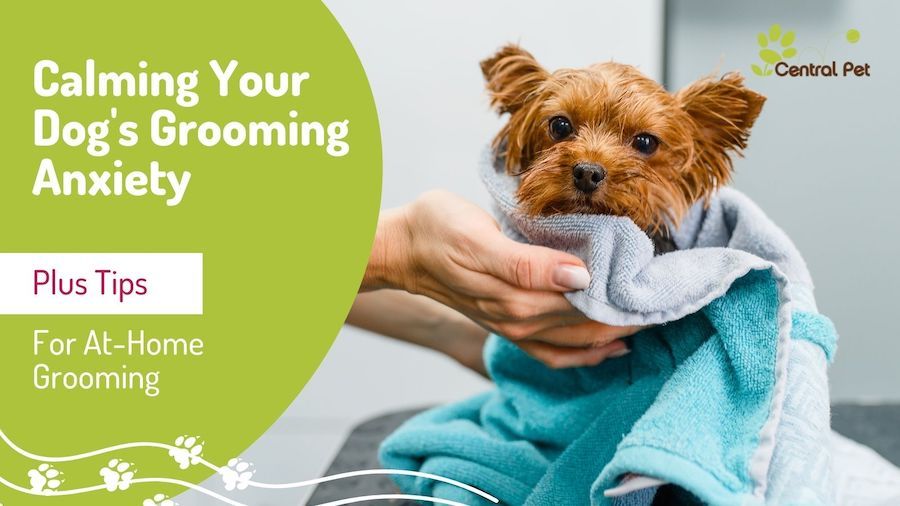
A key part of keeping your dog relaxed during grooming is setting up a calm environment. Choose a quiet, familiar room in your home for grooming sessions. Your bedroom or another room where your dog feels safe and comfortable is ideal. Bring in your dog’s favorite toys and blankets to help them feel at ease. Set up the grooming table or station in the room ahead of time and allow your dog to explore and get used to it (source). Let them sniff and check out the brushes, clippers, towels and anything else you’ll be using. Give them treats for showing interest and remaining relaxed around the tools and table.
Doing short, positive grooming sessions in this familiar environment will help acclimate your dog to the process. The more you can do to make the room comfortable and reduce stress triggers, the better. Pay attention to lighting, temperature and noise levels that your dog prefers. Keeping treats handy and incorporating play breaks during longer sessions can further help keep your dog at ease.
Positive Associations
One of the most effective ways to help a dog become more comfortable with grooming is to build positive associations. This means pairing grooming activities with things the dog finds pleasant, enjoyable, and rewarding. For example, give your dog praise, playtime, or treats immediately after or during brief grooming sessions. This helps the dog to associate grooming tasks like brushing, handling their paws and ears, clipping nails, etc. with good things.
Start with very short, limited grooming activities of just a few seconds or a minute. Provide lots of rewards and affection immediately after. As your dog relaxes and shows more tolerance, gradually increase the duration and difficulty of the tasks. But continue the positive reinforcement. In time, your dog will learn to see grooming as a positive experience leading to praise, play, and treats rather than something scary to avoid (source).
Gradual Desensitization
The key to helping your dog become more comfortable with grooming is to gradually expose them to the process through multiple short, positive sessions. Start with just having your dog in the grooming area without actually grooming them and reward them with treats for calm behavior. Over multiple sessions, systematically increase the duration and difficulty. For example, you may brush the dog for just 30 seconds to start, then work up to longer brushing sessions over days or weeks. Introduce tools like clippers and bathing equipment slowly too, associating their presence with rewards.
It’s important to go at your dog’s pace and not rush the desensitization process. Pay close attention to your dog’s body language and signs of stress. If your dog seems anxious or uncomfortable at any point, take a break and try an easier step next session. With patience and consistency, you can condition your dog to better tolerate the sensations and process of grooming through positive, gradual exposure.
For more on systematic desensitization techniques, check out this guide from Freedom Service Dogs: Grooming Desensitization Protocol.
Stay Relaxed
It’s important for the caretaker to stay calm, patient, and upbeat during grooming sessions. Anxiety is contagious, so if you get frustrated or nervous, your dog will pick up on that energy. Take deep breaths and speak in a soothing, encouraging tone. If your dog starts to get agitated, pause the session and give them a chance to resettle before continuing. Praise your dog profusely when they demonstrate calm behavior. Say things like “Good boy, so relaxed!” and reward with treats. Staying positive throughout the process will help your dog associate grooming with a pleasant experience.
Know the Signs of Stress
It’s important to watch for signs of anxiety or fear during grooming sessions so you can stop before your dog becomes overwhelmed. Common signs of stress include:
- Panting
- Trembling
- Trying to avoid being touched or groomed
- Yawning
- Lip licking
- Whining
If you notice any of these signs, take a break right away. End the session on a positive note with praise, treats, or play. Pushing your dog past their stress threshold will only make their anxiety worse. It’s better to keep sessions short and sweet rather than trying to complete everything in one long session.
With patience and consistency over multiple sessions, you can help desensitize your dog and make grooming less stressful. But go at your dog’s pace and don’t ignore signs of anxiety – their wellbeing should always come first.
Try Anxiolytics if Needed
If your dog shows extreme anxiety or fear during grooming even after trying all the above training techniques, you may want to consider trying anxiolytics or anti-anxiety medications. Some options to discuss with your vet include:
- Pheromones – Synthetic dog appeasing pheromones like Adaptil or dog calming collars with pheromones can help relax dogs.
- Supplements – Some calming supplements for dogs like chews with melatonin, tryptophan, chamomile, or hemp can reduce anxiety.
- Medication – In extreme cases, your vet may prescribe anti-anxiety medication like fluoxetine or clomipramine for short-term use during grooming. Benzodiazepines like alprazolam may also be used for situational anxiety.
Always consult your veterinarian before giving your dog any medication or supplement. Anxiolytics and sedatives should only be used under veterinary guidance for limited situations like grooming. Never attempt to sedate your dog without your vet’s supervision.
With patience and consistency using positive reinforcement techniques, along with management of the grooming environment, most dogs can overcome their fears. But if your pet is truly phobic about grooming even after dedicated training, discuss anxiety relief options with your veterinarian.
Be Patient and Persistent
Changing your dog’s emotional response to grooming takes time and consistency. Don’t expect your dog to go from anxious to calm in just one or two sessions. The desensitization process is gradual and you may only see small improvements at first. Celebrate these small successes! Any step in the right direction, no matter how small, is still progress. Remain patient and stick to the plan. With time and persistence, your dog can learn to relax and even enjoy grooming.
Remember that your dog’s anxiety has developed over a long period of repeated stressful experiences. Their grooming anxiety likely did not appear overnight, so it will take many positive and relaxing experiences to undo that conditioning. Be consistent with the desensitization techniques and continue providing positive reinforcement during grooming. Over time, you should notice your dog getting progressively more comfortable. But have realistic expectations – lasting change won’t happen in just a few days. Changing deep-rooted emotions requires patience. If you stay committed to the plan, your dog’s anxiety will dissipate.
Additionally, don’t punish your dog or get frustrated if they react anxiously sometimes, especially in the early stages. This will only add more stress and damage the desensitization process. Stay calm and keep sessions positive. With persistent and kind training methods, your dog will learn grooming doesn’t have to be scary.
Conclusion
Grooming is an essential part of properly caring for your dog, but the process can cause anxiety for some pups. Gradual desensitization with positive reinforcement is key to helping your dog become more comfortable with grooming over time.
Go slow and be patient during training sessions. Stay relaxed, keep things low-key, and focus on creating a calm, safe environment for your dog. With a gradual, positive approach focused on changing your dog’s emotional response, you can help him learn to tolerate handling and grooming.
Reward calm behavior and don’t force things. Pay attention to your dog’s stress signals. If you find grooming remains extremely difficult, consult your vet about anti-anxiety medications that may help while you continue behavior modification training.
With time and consistency using positive, stress-free methods, you can help your anxious dog become more comfortable with grooming. The investment of time and care will be worth it for your dog’s health and happiness.

